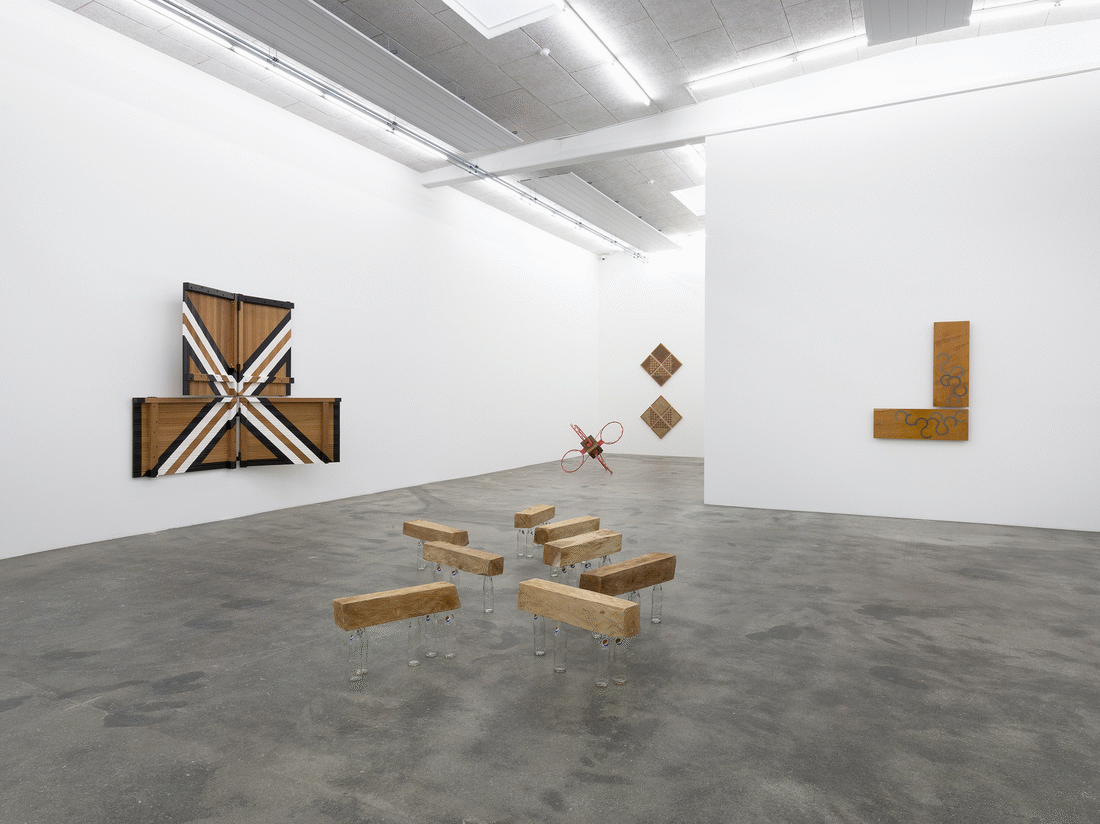Darío Escobar
Uncertainty Principle
20.01 - 24.03.2018
Nils Stærk is proud to present Dario Escobar’s solo exhibition Uncertainty Principle. The exhibition is Escobar’s second solo presentation in the gallery. On occasion of the exhibition independent curator Isabela Villanueva has written an essay on Escobar’s practice:
“Exploring the unknown requires tolerating uncertainty”
Brian Greene
We live in a time where the object is standardized: all over the world we encounter objects analogous except for small local differences- which are everyday diminishing and limited to minimal particulars. Sadly the presence of what is typical of a region, and therefore foreign to the rest of the world, is being erased so we now only come across identical mass-produced objects that could have been produced in China, Brazil or anywhere else. For the last couple of decades, there has been a rapid universalization of the forms of the objects; social practices of consumption, the formation of desire and yearning of belonging are some of the reasons why mass-produced and non-distinguishable objects reign nowadays.
This “fetishization” of the object is a concern that artists have been reflecting and working on for years: Marcel Duchamp with his Fountain, Andy Warhol with the Brillo box, Jeff Koons with the New Hoover Convertibles and Gabriel Orozco with La DS amongst many other examples. Dario Escobar, one of Central America’s most pivotal artists, continues with this tradition; his oeuvre however goes further than just promoting industrialized objects into works of art, one of his focuses is pondering how mass-production has almost annihilated local artisanry or regionalistic styles in objects, so in his artworks he merges both in an effort to redefine the limits between what is highbrow and what is popular.
Escobar is deeply knowledgeable about his country’s art historical legacy; he spends much of his time researching and studying archeological treasures from pre-Columbian times, visiting local crafts markets and admiring Baroque buildings and its decorations. The artist tends to travel throughout Guatemala and Mexico in order to revere, chronicle and mentally preserve the presence of what can be perceived as ‘foreign’ in this uniform globalized world we now live in. This is why certain local forms, colours and styles always permeate into his oeuvre; he seeks to preserve several thousands of years of Olmec, Mayan or Teotihuacan, and other pre-hispanic civilizations’ motifs and styles and merge them alongside universalized objects.
For over two decades Escobar has been producing a steady body of work that challenges the viewer to review mass-produced objects; their traditional uses are overturned so new uses and meanings can arise. At first glance his sculptures may appear to be common everyday, readymade objects; however, closer examination reveals the inclusion of detail-oriented craftsmanship, as well as an exploration of forms, surfaces and areas.
Uncertainty Principle is the artist’s second exhibition at Nils Stærk, the title refers to a constant that appears in all artworks presented: a lively and playful investigation on the unpredictable character of forms and lines, and an exploration of how balance can be achieved. The show features several sculptures made by the Guatemalan artist during the last months of 2017; all of them are made from objects used regularly for leisure activities. The pivotal concerns of Escobar’s work, such as conflating the aesthetics of hand-crafted and labor-intensive objects with those of mass-production, as well as a constant dialogue with certain imposed art historical canons, are keenly expressed in the works exhibited.
Without a doubt the most imposing sculptures of the show are the ones belonging to the Red Star series: works in which basketball hoops struggle to find equilibrium. Red Star # 4 greets audience members as they walk into the gallery; stability is a clear concern and one can perceive the precariousness between the single hoop and the conjoined immense wooden rectangle that is leaning against the corner of the room.
This contortion and fickleness of forms is a constant throughout the exhibition, it can be seen in wooden slabs where traditional guitar rosettes dance and snake around the surface, and in chessboard patterns that flap and move in and out of framed wooden squares. Having trained as an architect Escobar is always aware of spacing and of stability; as can be noted in Untitled in which a group of Pepsi bottles are upholding planks, it’s interesting to perceive how the small, delicate and fragile materials (glass bottles) are the ones actually doing the supporting and the heavy lifting. This work also contains a clear commentary on consumerism and how American culture has permeated and is dominating the world.
There are many art historical allusions in the works presented in Uncertainty Principle: the three-dimensional sculptures follow the purified forms of Minimalist sculptures, yet question how Guatemala has become a minion of the United States for modern and contemporary art canons even when Central America has a richer history and have been producing art for the last 7 thousand years. Art as a big chess game is a clear nod to Marcel Duchamp, but by orchestrating movement in the checkered tiles Escobar creates a visual paradox and an endless imaginary trajectory of space.
All the artworks contain delicate woodwork, as well as elements and references from Guatemala, Mexico and their rich cultural legacy. There are throughout the show many readings or afterthoughts, but formally and aesthetically there is always order, simplicity and harmony.
Text by Isabela Villanueva
Isabela Villanueva is an art historian and independent curator based in the United States. She worked several years at the Americas Society Art Gallery and was part of the curatorial team of the 30th São Paulo Biennial.




